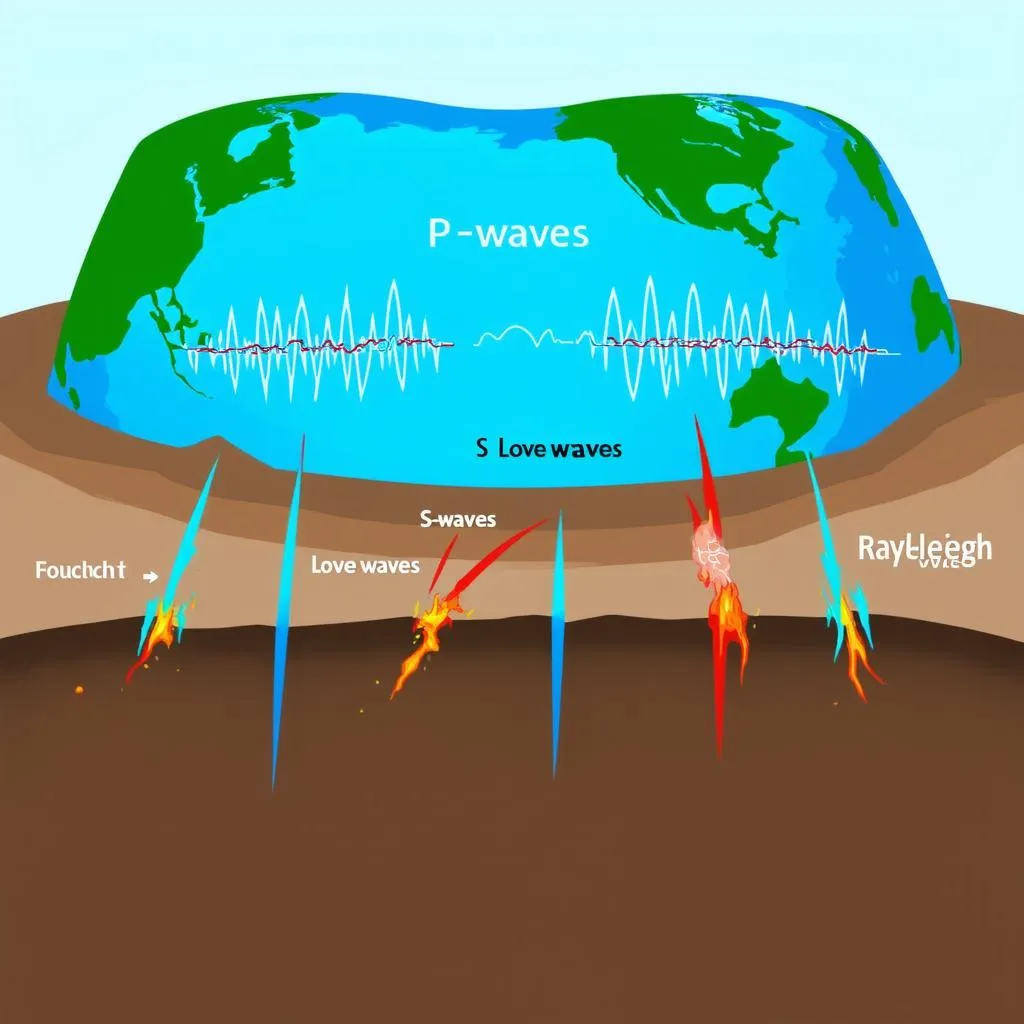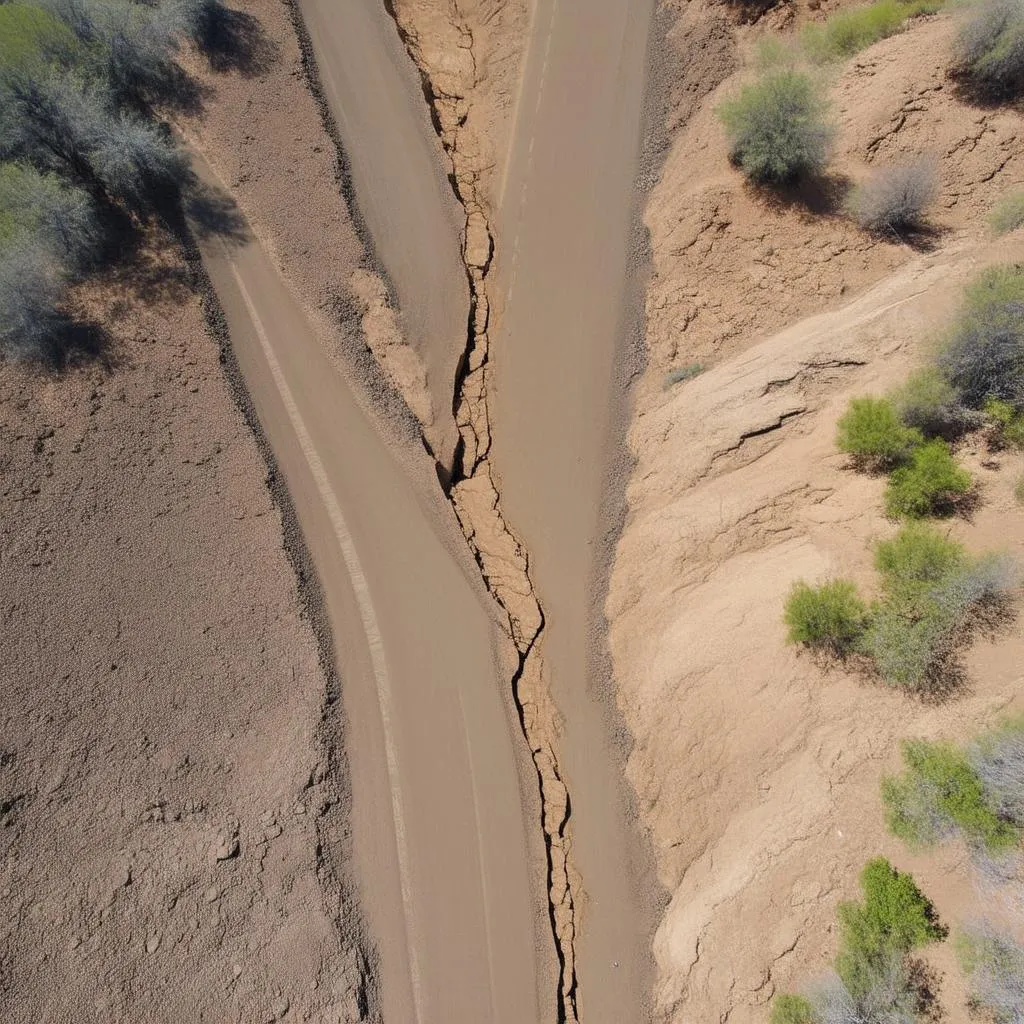Have you ever felt the ground shake beneath your feet? It’s a powerful reminder of the immense forces at work within our planet. Earthquakes, those sudden releases of energy from the Earth’s crust, are a testament to the constant motion happening below the surface. But have you ever wondered, how fast do earthquakes travel?
The answer, it turns out, is a bit more complex than just a single speed. You see, it’s not the earthquake itself that travels, but rather waves of energy called seismic waves. These waves radiate outwards from the earthquake’s focus, the point of origin deep within the Earth.
Seismic Waves: A Need for Speed
There are different types of seismic waves, each with its own characteristic speed and motion. Let’s break them down:
1. Primary Waves (P-waves)
Imagine a slinky – that coiled spring toy. When you push one end, the compression travels to the other end. P-waves are similar; they travel by compressing and expanding the material they pass through. These speedy waves are the fastest, racing through the Earth’s interior at speeds ranging from 3.5 to 8 kilometers per second (km/s). They can travel through solids, liquids, and even the air, which is why we sometimes hear a low rumble before feeling the shaking during an earthquake.
2. Secondary Waves (S-waves)
Unlike P-waves, S-waves are like shaking one end of a rope – the wave travels in an up-and-down or side-to-side motion. They are slower than P-waves, typically moving at speeds of 2 to 4.5 km/s. And here’s a crucial difference: S-waves can only travel through solids, not liquids. This characteristic has been instrumental in helping scientists understand the Earth’s interior structure.
3. Surface Waves: The Ground Shakers
As their name suggests, surface waves travel along the Earth’s surface. They are generated when P-waves and S-waves reach the surface and interact with it. These waves are responsible for the most intense shaking and damage during an earthquake.
There are two main types of surface waves:
- Love waves: They move the ground from side-to-side, like S-waves but confined to the surface.
- Rayleigh waves: These waves cause the ground to move in a rolling motion, similar to ocean waves but traveling through the Earth.
Surface waves are slower than both P-waves and S-waves, typically traveling at speeds of around 2-3 km/s. However, their impact is significant due to their larger amplitudes and longer durations.
Factors Affecting Seismic Wave Speed
Just like the speed of sound varies depending on the medium it’s traveling through, the speed of seismic waves isn’t constant either. Here are some factors that can influence their velocity:
- Rock type: Seismic waves travel faster through denser and more rigid rocks, like granite, compared to softer rocks like sedimentary rocks.
- Temperature: Generally, higher temperatures within the Earth slow down seismic waves.
- Pressure: Increased pressure at greater depths tends to increase the speed of seismic waves.
Earthquakes and Travel: Staying Safe
Understanding the speed of earthquake waves helps scientists locate earthquakes, determine their magnitude, and ultimately, develop early warning systems.
For travelers, it’s essential to be aware of earthquake risks, especially when visiting seismically active regions. Familiarize yourself with safety procedures and have a plan in case of an earthquake. Remember, knowledge is power, and being prepared can make all the difference.
FAQs about How Fast Earthquakes Travel
Q: Can I outrun an earthquake?
A: No, it’s impossible to outrun an earthquake. Seismic waves travel much faster than any human can run.
Q: Do earthquakes travel faster in water?
A: It’s not that earthquakes travel faster in water, but the type of wave changes. S-waves cannot travel through liquids, so when they reach a body of water like an ocean, they generate P-waves and surface waves, which can trigger tsunamis.
Q: How do scientists use the speed of earthquake waves to locate the epicenter?
A: Scientists use the time difference between the arrival of P-waves and S-waves at various seismograph stations around the world. This difference in arrival times helps them triangulate the earthquake’s epicenter.
Q: Are there any early warning systems for earthquakes?
A: Yes, several countries, including Japan and Mexico, have earthquake early warning systems that use seismic waves to detect an earthquake and send out alerts before the strongest shaking arrives.
Q: What should I do if I feel an earthquake while traveling?
A: If you are indoors, drop, cover, and hold on. Stay away from windows. If you are outdoors, move to an open area away from buildings, trees, and power lines.
Exploring the World with Travelcar.edu.vn
From understanding the forces that shape our planet to discovering breathtaking landscapes, travel is a journey of discovery. At Travelcar.edu.vn, we’re passionate about exploring the world and sharing our knowledge with you.
For more insightful articles and travel tips, visit our website and embark on your next adventure with us.
 Seismic Waves Traveling Through the Earth
Seismic Waves Traveling Through the Earth
 Aerial View of the San Andreas Fault
Aerial View of the San Andreas Fault